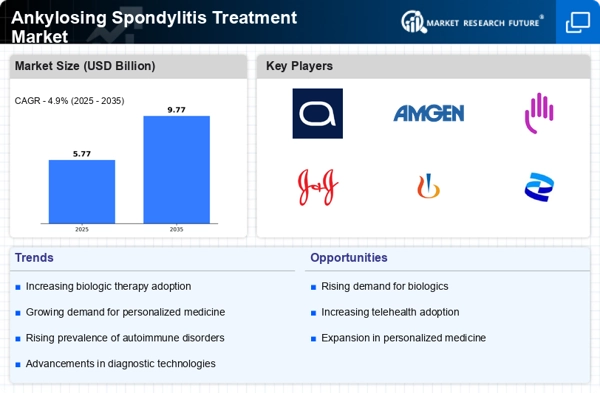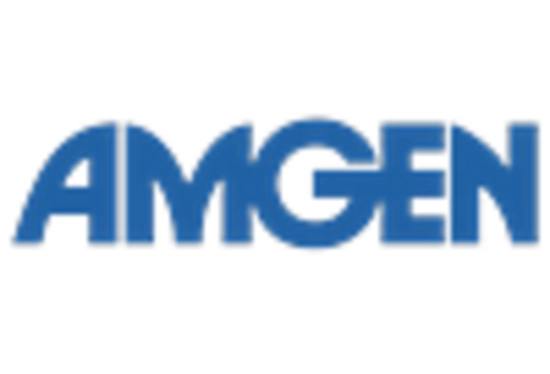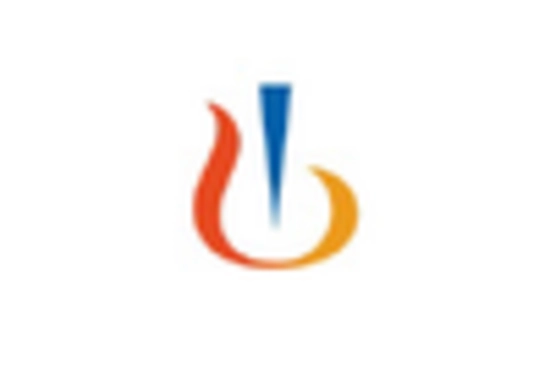Non-Steroidal Anti-Inflammatory Drugs
Tumor Necrosis Factor Inhibitors
Interleukin Inhibitors
Analgesics
Disease Modifying Anti-Rheumatic Drugs
Oral
Injectable
Topical
Adults
Pediatric
Hospital Pharmacy
Retail Pharmacy
Online Pharmacy
North America
Europe
South America
Asia Pacific
Middle East and Africa
North America Outlook (USD Billion, 2019-2035)
North America Ankylosing Spondylitis Treatment Market by Treatment Type
Non-Steroidal Anti-Inflammatory Drugs
Tumor Necrosis Factor Inhibitors
Interleukin Inhibitors
Analgesics
Disease Modifying Anti-Rheumatic Drugs
North America Ankylosing Spondylitis Treatment Market by Route of Administration Type
Oral
Injectable
Topical
North America Ankylosing Spondylitis Treatment Market by Patient Type
Adults
Pediatric
North America Ankylosing Spondylitis Treatment Market by Distribution Channel Type
Hospital Pharmacy
Retail Pharmacy
Online Pharmacy
North America Ankylosing Spondylitis Treatment Market by Regional Type
US
Canada
US Outlook (USD Billion, 2019-2035)
US Ankylosing Spondylitis Treatment Market by Treatment Type
Non-Steroidal Anti-Inflammatory Drugs
Tumor Necrosis Factor Inhibitors
Interleukin Inhibitors
Analgesics
Disease Modifying Anti-Rheumatic Drugs
US Ankylosing Spondylitis Treatment Market by Route of Administration Type
Oral
Injectable
Topical
US Ankylosing Spondylitis Treatment Market by Patient Type
Adults
Pediatric
US Ankylosing Spondylitis Treatment Market by Distribution Channel Type
Hospital Pharmacy
Retail Pharmacy
Online Pharmacy
CANADA Outlook (USD Billion, 2019-2035)
CANADA Ankylosing Spondylitis Treatment Market by Treatment Type
Non-Steroidal Anti-Inflammatory Drugs
Tumor Necrosis Factor Inhibitors
Interleukin Inhibitors
Analgesics
Disease Modifying Anti-Rheumatic Drugs
CANADA Ankylosing Spondylitis Treatment Market by Route of Administration Type
Oral
Injectable
Topical
CANADA Ankylosing Spondylitis Treatment Market by Patient Type
Adults
Pediatric
CANADA Ankylosing Spondylitis Treatment Market by Distribution Channel Type
Hospital Pharmacy
Retail Pharmacy
Online Pharmacy
Europe Outlook (USD Billion, 2019-2035)
Europe Ankylosing Spondylitis Treatment Market by Treatment Type
Non-Steroidal Anti-Inflammatory Drugs
Tumor Necrosis Factor Inhibitors
Interleukin Inhibitors
Analgesics
Disease Modifying Anti-Rheumatic Drugs
Europe Ankylosing Spondylitis Treatment Market by Route of Administration Type
Oral
Injectable
Topical
Europe Ankylosing Spondylitis Treatment Market by Patient Type
Adults
Pediatric
Europe Ankylosing Spondylitis Treatment Market by Distribution Channel Type
Hospital Pharmacy
Retail Pharmacy
Online Pharmacy
Europe Ankylosing Spondylitis Treatment Market by Regional Type
Germany
UK
France
Russia
Italy
Spain
Rest of Europe
GERMANY Outlook (USD Billion, 2019-2035)
GERMANY Ankylosing Spondylitis Treatment Market by Treatment Type
Non-Steroidal Anti-Inflammatory Drugs
Tumor Necrosis Factor Inhibitors
Interleukin Inhibitors
Analgesics
Disease Modifying Anti-Rheumatic Drugs
GERMANY Ankylosing Spondylitis Treatment Market by Route of Administration Type
Oral
Injectable
Topical
GERMANY Ankylosing Spondylitis Treatment Market by Patient Type
Adults
Pediatric
GERMANY Ankylosing Spondylitis Treatment Market by Distribution Channel Type
Hospital Pharmacy
Retail Pharmacy
Online Pharmacy
UK Outlook (USD Billion, 2019-2035)
UK Ankylosing Spondylitis Treatment Market by Treatment Type
Non-Steroidal Anti-Inflammatory Drugs
Tumor Necrosis Factor Inhibitors
Interleukin Inhibitors
Analgesics
Disease Modifying Anti-Rheumatic Drugs
UK Ankylosing Spondylitis Treatment Market by Route of Administration Type
Oral
Injectable
Topical
UK Ankylosing Spondylitis Treatment Market by Patient Type
Adults
Pediatric
UK Ankylosing Spondylitis Treatment Market by Distribution Channel Type
Hospital Pharmacy
Retail Pharmacy
Online Pharmacy
FRANCE Outlook (USD Billion, 2019-2035)
FRANCE Ankylosing Spondylitis Treatment Market by Treatment Type
Non-Steroidal Anti-Inflammatory Drugs
Tumor Necrosis Factor Inhibitors
Interleukin Inhibitors
Analgesics
Disease Modifying Anti-Rheumatic Drugs
FRANCE Ankylosing Spondylitis Treatment Market by Route of Administration Type
Oral
Injectable
Topical
FRANCE Ankylosing Spondylitis Treatment Market by Patient Type
Adults
Pediatric
FRANCE Ankylosing Spondylitis Treatment Market by Distribution Channel Type
Hospital Pharmacy
Retail Pharmacy
Online Pharmacy
RUSSIA Outlook (USD Billion, 2019-2035)
RUSSIA Ankylosing Spondylitis Treatment Market by Treatment Type
Non-Steroidal Anti-Inflammatory Drugs
Tumor Necrosis Factor Inhibitors
Interleukin Inhibitors
Analgesics
Disease Modifying Anti-Rheumatic Drugs
RUSSIA Ankylosing Spondylitis Treatment Market by Route of Administration Type
Oral
Injectable
Topical
RUSSIA Ankylosing Spondylitis Treatment Market by Patient Type
Adults
Pediatric
RUSSIA Ankylosing Spondylitis Treatment Market by Distribution Channel Type
Hospital Pharmacy
Retail Pharmacy
Online Pharmacy
ITALY Outlook (USD Billion, 2019-2035)
ITALY Ankylosing Spondylitis Treatment Market by Treatment Type
Non-Steroidal Anti-Inflammatory Drugs
Tumor Necrosis Factor Inhibitors
Interleukin Inhibitors
Analgesics
Disease Modifying Anti-Rheumatic Drugs
ITALY Ankylosing Spondylitis Treatment Market by Route of Administration Type
Oral
Injectable
Topical
ITALY Ankylosing Spondylitis Treatment Market by Patient Type
Adults
Pediatric
ITALY Ankylosing Spondylitis Treatment Market by Distribution Channel Type
Hospital Pharmacy
Retail Pharmacy
Online Pharmacy
SPAIN Outlook (USD Billion, 2019-2035)
SPAIN Ankylosing Spondylitis Treatment Market by Treatment Type
Non-Steroidal Anti-Inflammatory Drugs
Tumor Necrosis Factor Inhibitors
Interleukin Inhibitors
Analgesics
Disease Modifying Anti-Rheumatic Drugs
SPAIN Ankylosing Spondylitis Treatment Market by Route of Administration Type
Oral
Injectable
Topical
SPAIN Ankylosing Spondylitis Treatment Market by Patient Type
Adults
Pediatric
SPAIN Ankylosing Spondylitis Treatment Market by Distribution Channel Type
Hospital Pharmacy
Retail Pharmacy
Online Pharmacy
REST OF EUROPE Outlook (USD Billion, 2019-2035)
REST OF EUROPE Ankylosing Spondylitis Treatment Market by Treatment Type
Non-Steroidal Anti-Inflammatory Drugs
Tumor Necrosis Factor Inhibitors
Interleukin Inhibitors
Analgesics
Disease Modifying Anti-Rheumatic Drugs
REST OF EUROPE Ankylosing Spondylitis Treatment Market by Route of Administration Type
Oral
Injectable
Topical
REST OF EUROPE Ankylosing Spondylitis Treatment Market by Patient Type
Adults
Pediatric
REST OF EUROPE Ankylosing Spondylitis Treatment Market by Distribution Channel Type
Hospital Pharmacy
Retail Pharmacy
Online Pharmacy
APAC Outlook (USD Billion, 2019-2035)
APAC Ankylosing Spondylitis Treatment Market by Treatment Type
Non-Steroidal Anti-Inflammatory Drugs
Tumor Necrosis Factor Inhibitors
Interleukin Inhibitors
Analgesics
Disease Modifying Anti-Rheumatic Drugs
APAC Ankylosing Spondylitis Treatment Market by Route of Administration Type
Oral
Injectable
Topical
APAC Ankylosing Spondylitis Treatment Market by Patient Type
Adults
Pediatric
APAC Ankylosing Spondylitis Treatment Market by Distribution Channel Type
Hospital Pharmacy
Retail Pharmacy
Online Pharmacy
APAC Ankylosing Spondylitis Treatment Market by Regional Type
China
India
Japan
South Korea
Malaysia
Thailand
Indonesia
Rest of APAC
CHINA Outlook (USD Billion, 2019-2035)
CHINA Ankylosing Spondylitis Treatment Market by Treatment Type
Non-Steroidal Anti-Inflammatory Drugs
Tumor Necrosis Factor Inhibitors
Interleukin Inhibitors
Analgesics
Disease Modifying Anti-Rheumatic Drugs
CHINA Ankylosing Spondylitis Treatment Market by Route of Administration Type
Oral
Injectable
Topical
CHINA Ankylosing Spondylitis Treatment Market by Patient Type
Adults
Pediatric
CHINA Ankylosing Spondylitis Treatment Market by Distribution Channel Type
Hospital Pharmacy
Retail Pharmacy
Online Pharmacy
INDIA Outlook (USD Billion, 2019-2035)
INDIA Ankylosing Spondylitis Treatment Market by Treatment Type
Non-Steroidal Anti-Inflammatory Drugs
Tumor Necrosis Factor Inhibitors
Interleukin Inhibitors
Analgesics
Disease Modifying Anti-Rheumatic Drugs
INDIA Ankylosing Spondylitis Treatment Market by Route of Administration Type
Oral
Injectable
Topical
INDIA Ankylosing Spondylitis Treatment Market by Patient Type
Adults
Pediatric
INDIA Ankylosing Spondylitis Treatment Market by Distribution Channel Type
Hospital Pharmacy
Retail Pharmacy
Online Pharmacy
JAPAN Outlook (USD Billion, 2019-2035)
JAPAN Ankylosing Spondylitis Treatment Market by Treatment Type
Non-Steroidal Anti-Inflammatory Drugs
Tumor Necrosis Factor Inhibitors
Interleukin Inhibitors
Analgesics
Disease Modifying Anti-Rheumatic Drugs
JAPAN Ankylosing Spondylitis Treatment Market by Route of Administration Type
Oral
Injectable
Topical
JAPAN Ankylosing Spondylitis Treatment Market by Patient Type
Adults
Pediatric
JAPAN Ankylosing Spondylitis Treatment Market by Distribution Channel Type
Hospital Pharmacy
Retail Pharmacy
Online Pharmacy
SOUTH KOREA Outlook (USD Billion, 2019-2035)
SOUTH KOREA Ankylosing Spondylitis Treatment Market by Treatment Type
Non-Steroidal Anti-Inflammatory Drugs
Tumor Necrosis Factor Inhibitors
Interleukin Inhibitors
Analgesics
Disease Modifying Anti-Rheumatic Drugs
SOUTH KOREA Ankylosing Spondylitis Treatment Market by Route of Administration Type
Oral
Injectable
Topical
SOUTH KOREA Ankylosing Spondylitis Treatment Market by Patient Type
Adults
Pediatric
SOUTH KOREA Ankylosing Spondylitis Treatment Market by Distribution Channel Type
Hospital Pharmacy
Retail Pharmacy
Online Pharmacy
MALAYSIA Outlook (USD Billion, 2019-2035)
MALAYSIA Ankylosing Spondylitis Treatment Market by Treatment Type
Non-Steroidal Anti-Inflammatory Drugs
Tumor Necrosis Factor Inhibitors
Interleukin Inhibitors
Analgesics
Disease Modifying Anti-Rheumatic Drugs
MALAYSIA Ankylosing Spondylitis Treatment Market by Route of Administration Type
Oral
Injectable
Topical
MALAYSIA Ankylosing Spondylitis Treatment Market by Patient Type
Adults
Pediatric
MALAYSIA Ankylosing Spondylitis Treatment Market by Distribution Channel Type
Hospital Pharmacy
Retail Pharmacy
Online Pharmacy
THAILAND Outlook (USD Billion, 2019-2035)
THAILAND Ankylosing Spondylitis Treatment Market by Treatment Type
Non-Steroidal Anti-Inflammatory Drugs
Tumor Necrosis Factor Inhibitors
Interleukin Inhibitors
Analgesics
Disease Modifying Anti-Rheumatic Drugs
THAILAND Ankylosing Spondylitis Treatment Market by Route of Administration Type
Oral
Injectable
Topical
THAILAND Ankylosing Spondylitis Treatment Market by Patient Type
Adults
Pediatric
THAILAND Ankylosing Spondylitis Treatment Market by Distribution Channel Type
Hospital Pharmacy
Retail Pharmacy
Online Pharmacy
INDONESIA Outlook (USD Billion, 2019-2035)
INDONESIA Ankylosing Spondylitis Treatment Market by Treatment Type
Non-Steroidal Anti-Inflammatory Drugs
Tumor Necrosis Factor Inhibitors
Interleukin Inhibitors
Analgesics
Disease Modifying Anti-Rheumatic Drugs
INDONESIA Ankylosing Spondylitis Treatment Market by Route of Administration Type
Oral
Injectable
Topical
INDONESIA Ankylosing Spondylitis Treatment Market by Patient Type
Adults
Pediatric
INDONESIA Ankylosing Spondylitis Treatment Market by Distribution Channel Type
Hospital Pharmacy
Retail Pharmacy
Online Pharmacy
REST OF APAC Outlook (USD Billion, 2019-2035)
REST OF APAC Ankylosing Spondylitis Treatment Market by Treatment Type
Non-Steroidal Anti-Inflammatory Drugs
Tumor Necrosis Factor Inhibitors
Interleukin Inhibitors
Analgesics
Disease Modifying Anti-Rheumatic Drugs
REST OF APAC Ankylosing Spondylitis Treatment Market by Route of Administration Type
Oral
Injectable
Topical
REST OF APAC Ankylosing Spondylitis Treatment Market by Patient Type
Adults
Pediatric
REST OF APAC Ankylosing Spondylitis Treatment Market by Distribution Channel Type
Hospital Pharmacy
Retail Pharmacy
Online Pharmacy
South America Outlook (USD Billion, 2019-2035)
South America Ankylosing Spondylitis Treatment Market by Treatment Type
Non-Steroidal Anti-Inflammatory Drugs
Tumor Necrosis Factor Inhibitors
Interleukin Inhibitors
Analgesics
Disease Modifying Anti-Rheumatic Drugs
South America Ankylosing Spondylitis Treatment Market by Route of Administration Type
Oral
Injectable
Topical
South America Ankylosing Spondylitis Treatment Market by Patient Type
Adults
Pediatric
South America Ankylosing Spondylitis Treatment Market by Distribution Channel Type
Hospital Pharmacy
Retail Pharmacy
Online Pharmacy
South America Ankylosing Spondylitis Treatment Market by Regional Type
Brazil
Mexico
Argentina
Rest of South America
BRAZIL Outlook (USD Billion, 2019-2035)
BRAZIL Ankylosing Spondylitis Treatment Market by Treatment Type
Non-Steroidal Anti-Inflammatory Drugs
Tumor Necrosis Factor Inhibitors
Interleukin Inhibitors
Analgesics
Disease Modifying Anti-Rheumatic Drugs
BRAZIL Ankylosing Spondylitis Treatment Market by Route of Administration Type
Oral
Injectable
Topical
BRAZIL Ankylosing Spondylitis Treatment Market by Patient Type
Adults
Pediatric
BRAZIL Ankylosing Spondylitis Treatment Market by Distribution Channel Type
Hospital Pharmacy
Retail Pharmacy
Online Pharmacy
MEXICO Outlook (USD Billion, 2019-2035)
MEXICO Ankylosing Spondylitis Treatment Market by Treatment Type
Non-Steroidal Anti-Inflammatory Drugs
Tumor Necrosis Factor Inhibitors
Interleukin Inhibitors
Analgesics
Disease Modifying Anti-Rheumatic Drugs
MEXICO Ankylosing Spondylitis Treatment Market by Route of Administration Type
Oral
Injectable
Topical
MEXICO Ankylosing Spondylitis Treatment Market by Patient Type
Adults
Pediatric
MEXICO Ankylosing Spondylitis Treatment Market by Distribution Channel Type
Hospital Pharmacy
Retail Pharmacy
Online Pharmacy
ARGENTINA Outlook (USD Billion, 2019-2035)
ARGENTINA Ankylosing Spondylitis Treatment Market by Treatment Type
Non-Steroidal Anti-Inflammatory Drugs
Tumor Necrosis Factor Inhibitors
Interleukin Inhibitors
Analgesics
Disease Modifying Anti-Rheumatic Drugs
ARGENTINA Ankylosing Spondylitis Treatment Market by Route of Administration Type
Oral
Injectable
Topical
ARGENTINA Ankylosing Spondylitis Treatment Market by Patient Type
Adults
Pediatric
ARGENTINA Ankylosing Spondylitis Treatment Market by Distribution Channel Type
Hospital Pharmacy
Retail Pharmacy
Online Pharmacy
REST OF SOUTH AMERICA Outlook (USD Billion, 2019-2035)
REST OF SOUTH AMERICA Ankylosing Spondylitis Treatment Market by Treatment Type
Non-Steroidal Anti-Inflammatory Drugs
Tumor Necrosis Factor Inhibitors
Interleukin Inhibitors
Analgesics
Disease Modifying Anti-Rheumatic Drugs
REST OF SOUTH AMERICA Ankylosing Spondylitis Treatment Market by Route of Administration Type
Oral
Injectable
Topical
REST OF SOUTH AMERICA Ankylosing Spondylitis Treatment Market by Patient Type
Adults
Pediatric
REST OF SOUTH AMERICA Ankylosing Spondylitis Treatment Market by Distribution Channel Type
Hospital Pharmacy
Retail Pharmacy
Online Pharmacy
MEA Outlook (USD Billion, 2019-2035)
MEA Ankylosing Spondylitis Treatment Market by Treatment Type
Non-Steroidal Anti-Inflammatory Drugs
Tumor Necrosis Factor Inhibitors
Interleukin Inhibitors
Analgesics
Disease Modifying Anti-Rheumatic Drugs
MEA Ankylosing Spondylitis Treatment Market by Route of Administration Type
Oral
Injectable
Topical
MEA Ankylosing Spondylitis Treatment Market by Patient Type
Adults
Pediatric
MEA Ankylosing Spondylitis Treatment Market by Distribution Channel Type
Hospital Pharmacy
Retail Pharmacy
Online Pharmacy
MEA Ankylosing Spondylitis Treatment Market by Regional Type
GCC Countries
South Africa
Rest of MEA
GCC COUNTRIES Outlook (USD Billion, 2019-2035)
GCC COUNTRIES Ankylosing Spondylitis Treatment Market by Treatment Type
Non-Steroidal Anti-Inflammatory Drugs
Tumor Necrosis Factor Inhibitors
Interleukin Inhibitors
Analgesics
Disease Modifying Anti-Rheumatic Drugs
GCC COUNTRIES Ankylosing Spondylitis Treatment Market by Route of Administration Type
Oral
Injectable
Topical
GCC COUNTRIES Ankylosing Spondylitis Treatment Market by Patient Type
Adults
Pediatric
GCC COUNTRIES Ankylosing Spondylitis Treatment Market by Distribution Channel Type
Hospital Pharmacy
Retail Pharmacy
Online Pharmacy
SOUTH AFRICA Outlook (USD Billion, 2019-2035)
SOUTH AFRICA Ankylosing Spondylitis Treatment Market by Treatment Type
Non-Steroidal Anti-Inflammatory Drugs
Tumor Necrosis Factor Inhibitors
Interleukin Inhibitors
Analgesics
Disease Modifying Anti-Rheumatic Drugs
SOUTH AFRICA Ankylosing Spondylitis Treatment Market by Route of Administration Type
Oral
Injectable
Topical
SOUTH AFRICA Ankylosing Spondylitis Treatment Market by Patient Type
Adults
Pediatric
SOUTH AFRICA Ankylosing Spondylitis Treatment Market by Distribution Channel Type
Hospital Pharmacy
Retail Pharmacy
Online Pharmacy
REST OF MEA Outlook (USD Billion, 2019-2035)
REST OF MEA Ankylosing Spondylitis Treatment Market by Treatment Type
Non-Steroidal Anti-Inflammatory Drugs
Tumor Necrosis Factor Inhibitors
Interleukin Inhibitors
Analgesics
Disease Modifying Anti-Rheumatic Drugs
REST OF MEA Ankylosing Spondylitis Treatment Market by Route of Administration Type
Oral
Injectable
Topical
REST OF MEA Ankylosing Spondylitis Treatment Market by Patient Type
Adults
Pediatric
REST OF MEA Ankylosing Spondylitis Treatment Market by Distribution Channel Type
Hospital Pharmacy
Retail Pharmacy
Online Pharmacy

















Leave a Comment